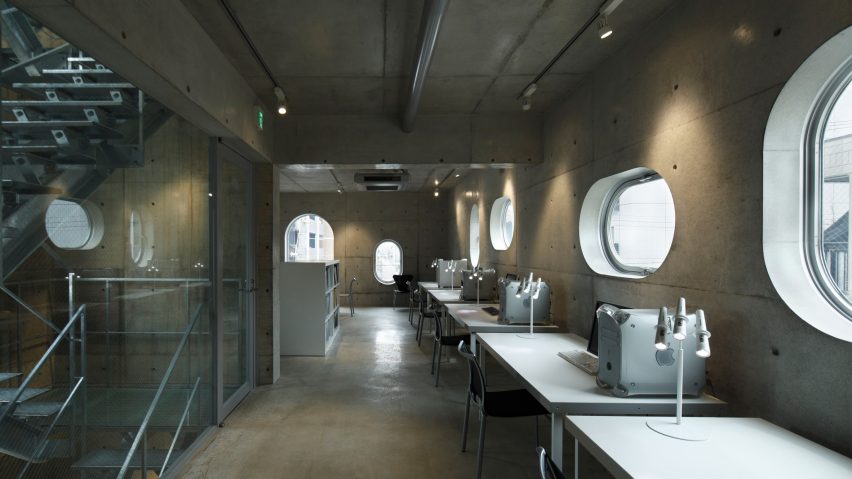
Oblong windows puncture concrete office block by Yoshihiro Kato Atelier
Oblong windows with pivoting glazing cut through the striking white walls of this minimal five-storey office block in Japan's Aichi Prefecture, designed by local architects Yoshihiro Kato Atelier.
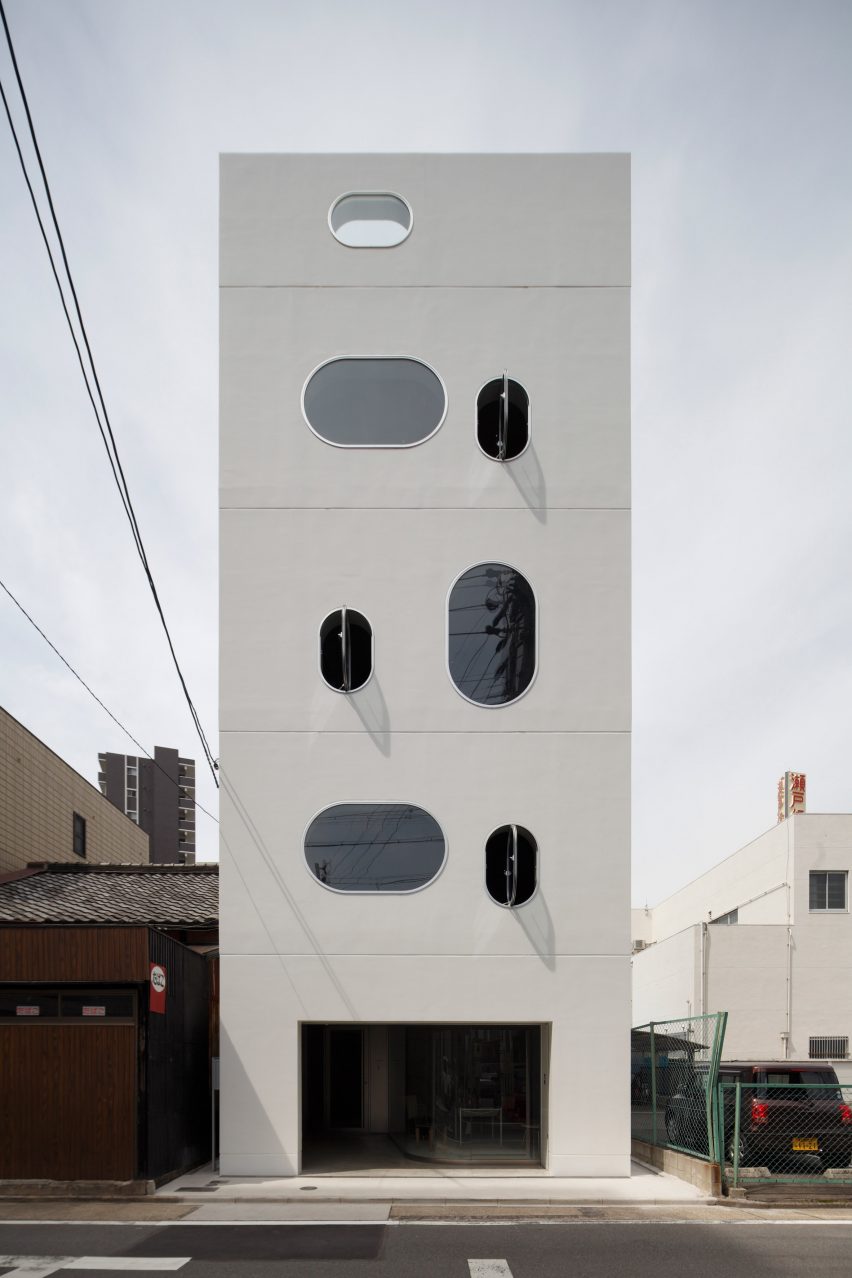
The concrete building, named Tetote Note, is located on a tight 100-square-metre site in the city of Nagoya and provides collaborative workspaces for designers and their clients.
"In Japanese, 'tetote' literally means hand-in-hand," studio founder Yoshihiro Kato told Dezeen. "I wanted Tenote Tote to be the building where designers, clients, contractors, and all the people involved, hold hands with each other and work together with synergy."
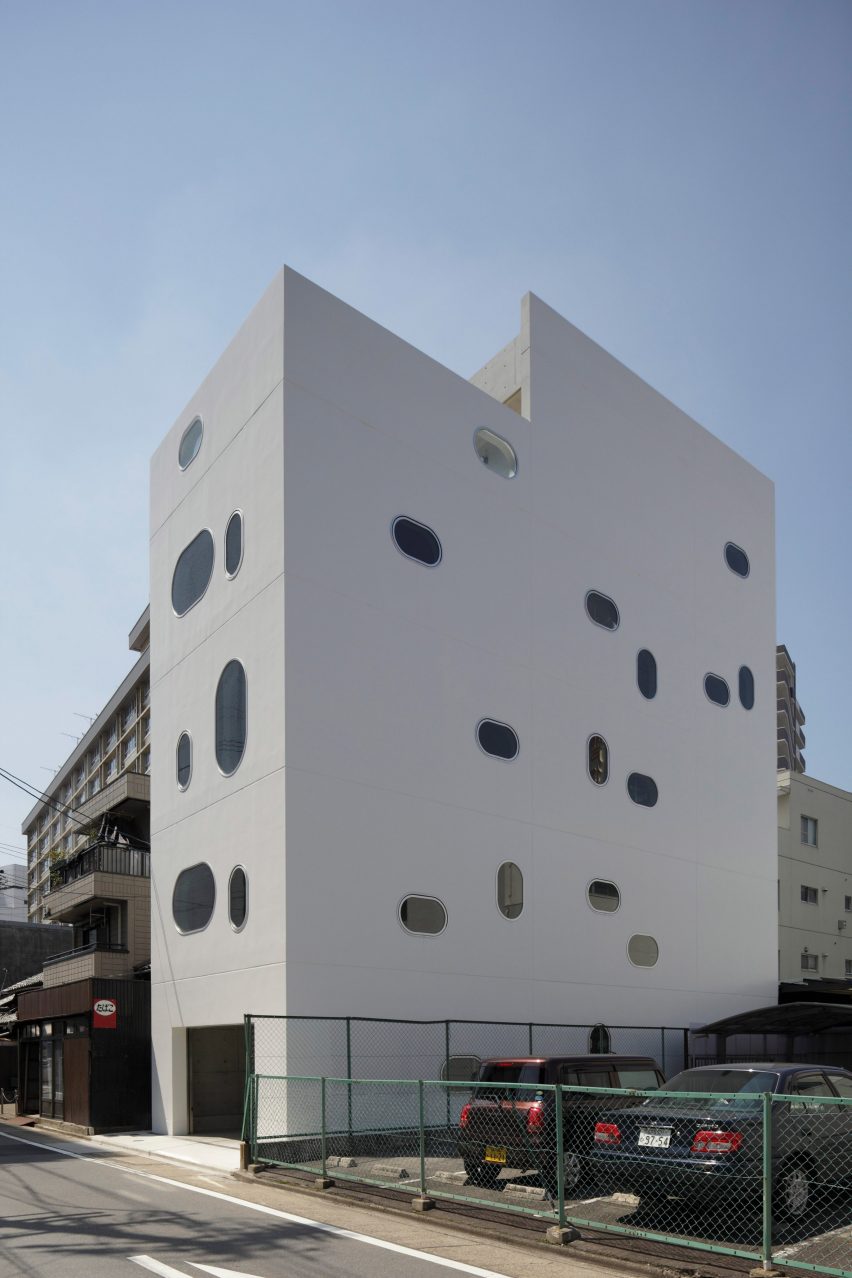
The building is finished in a white photocatalytic paint designed to withstand the effects of weathering, while complementing the minimal interior finishes.
The pared-back interiors are intended to draw focus to the exposed board-marked concrete walls, and to accentuate the irregularly placed oblong windows and their pivoting glazing.
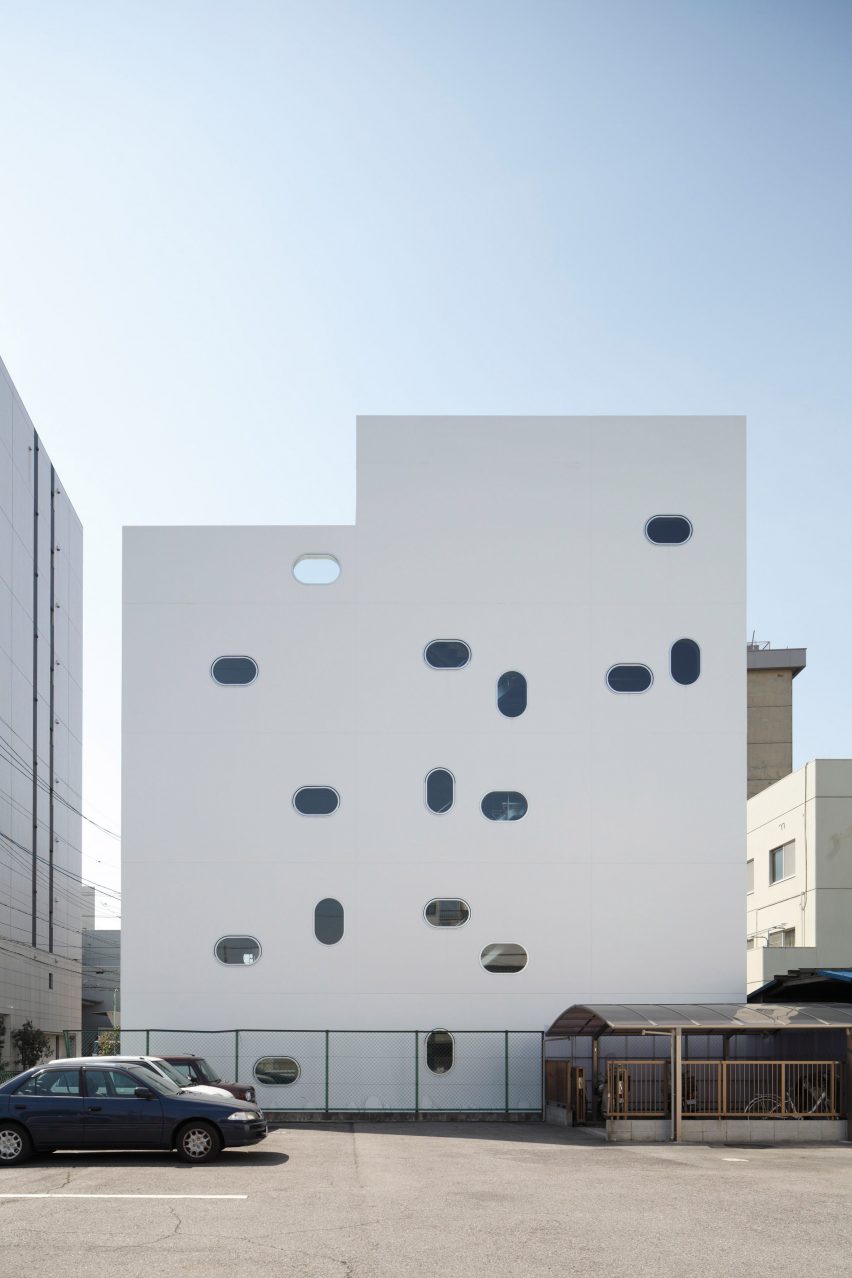
"Attached just at the surface of the outer wall, these windows give the impression of flatness viewed from the outside, while the thickness of the walls further emphasises the oblong shape, capturing more random shadows and light," said Kato.
The austere rooms within provide a variety of workspaces, from a communal studio to a meeting room enclosed by a curving glass wall.
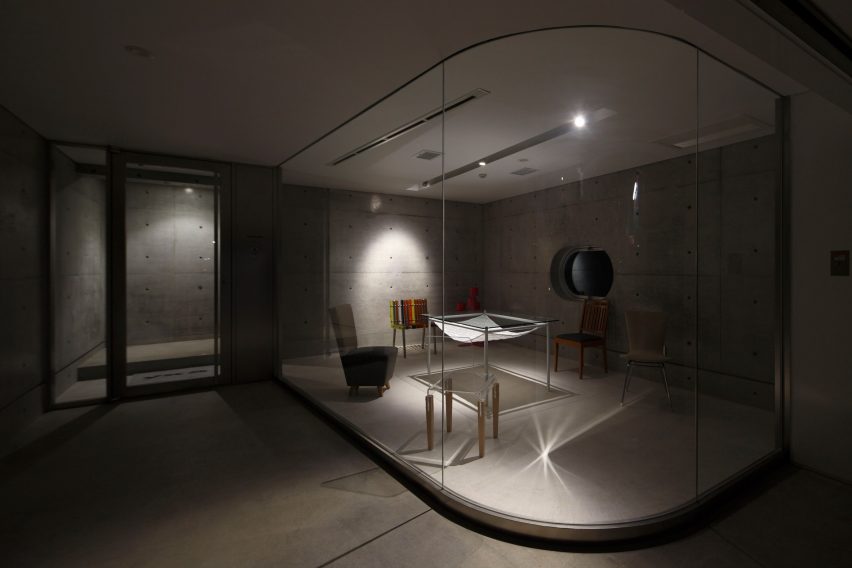
A secluded workspace on the fourth floor also has access to a generously sized roof terrace overlooking the busy street below.
Each space features minimal furniture pieces teamed with various flexible design features that allows its function to change, such as storage on wheels and a sliding door between the first floor meeting rooms.
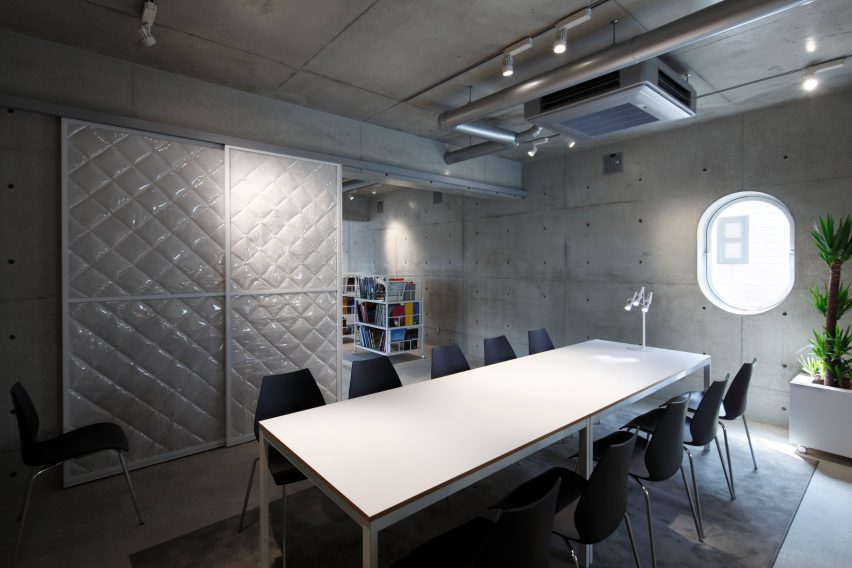
To flood the depths of the building with sufficient natural light, the floors are all connected by a skylit industrial-style staircase, which is enclosed by glass walls.
"The steps of the steel staircases are punched through with oblong holes to allow more light to reach all the way to the bottom floor," said the architect.
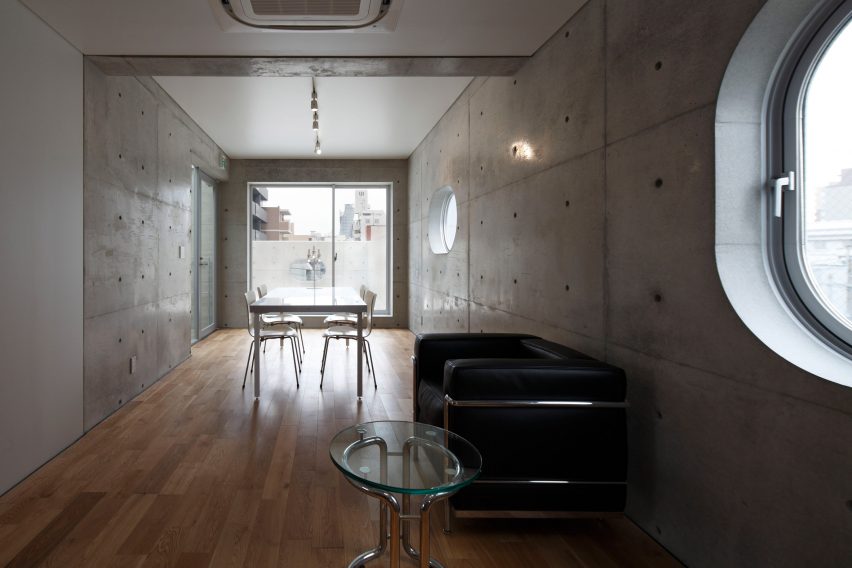
Yoshihiro Kato Atelier also incorporated custom-built lights that are intended to reduce the office's energy consumption, while also providing portable torches in case of an emergency.
"The lighting stands are mounted with three LED flashlights that can be removed and used as portable flashlights in the event of an emergency," Kato explained. "The batteries are rechargeable and reusable."
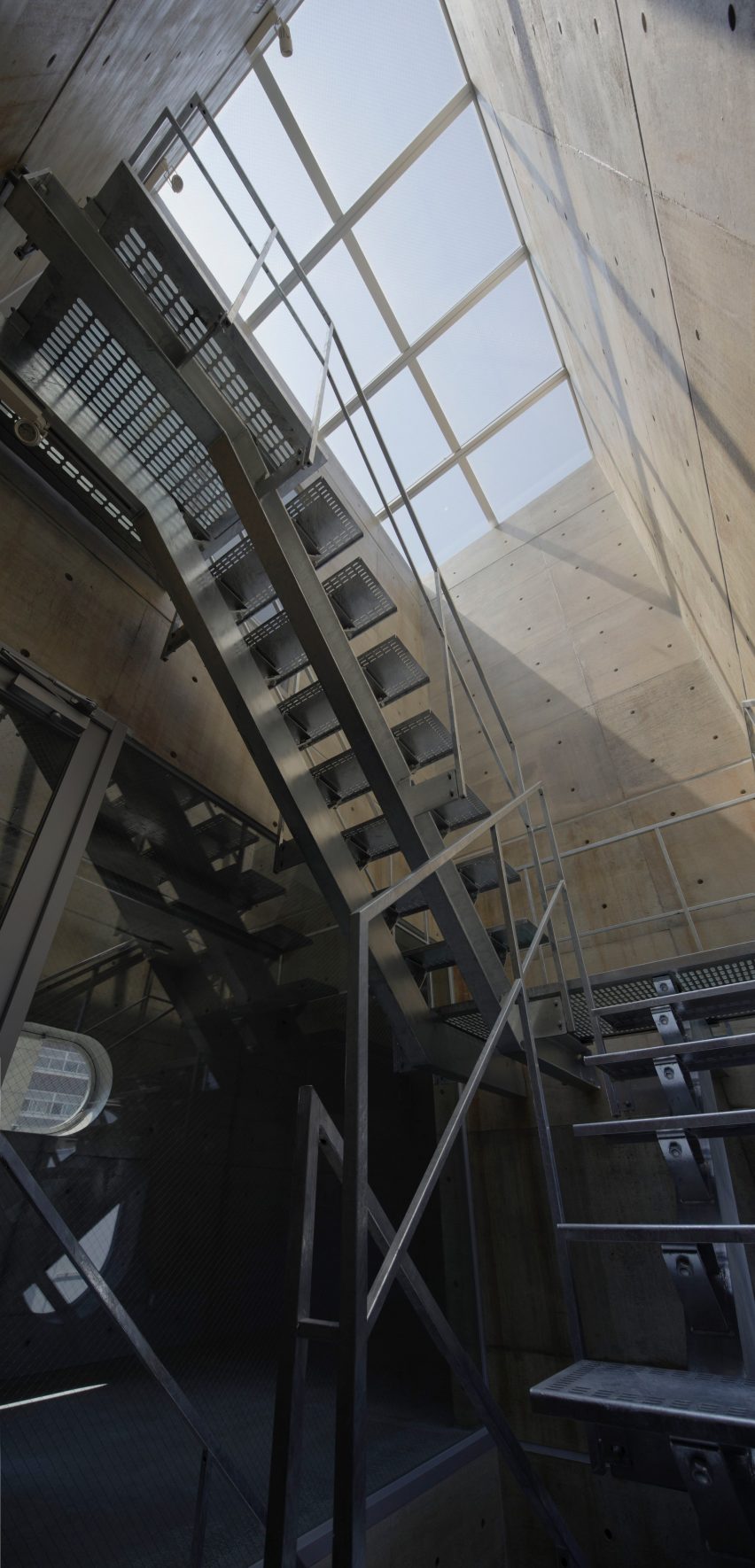
A similar office building in Seoul, recently completed by ThePlus Architects, also features a stark white facade that contrasts internally exposed concrete, and encloses a variety of pared-back work spaces.
Photography by Nacasa & Partners.